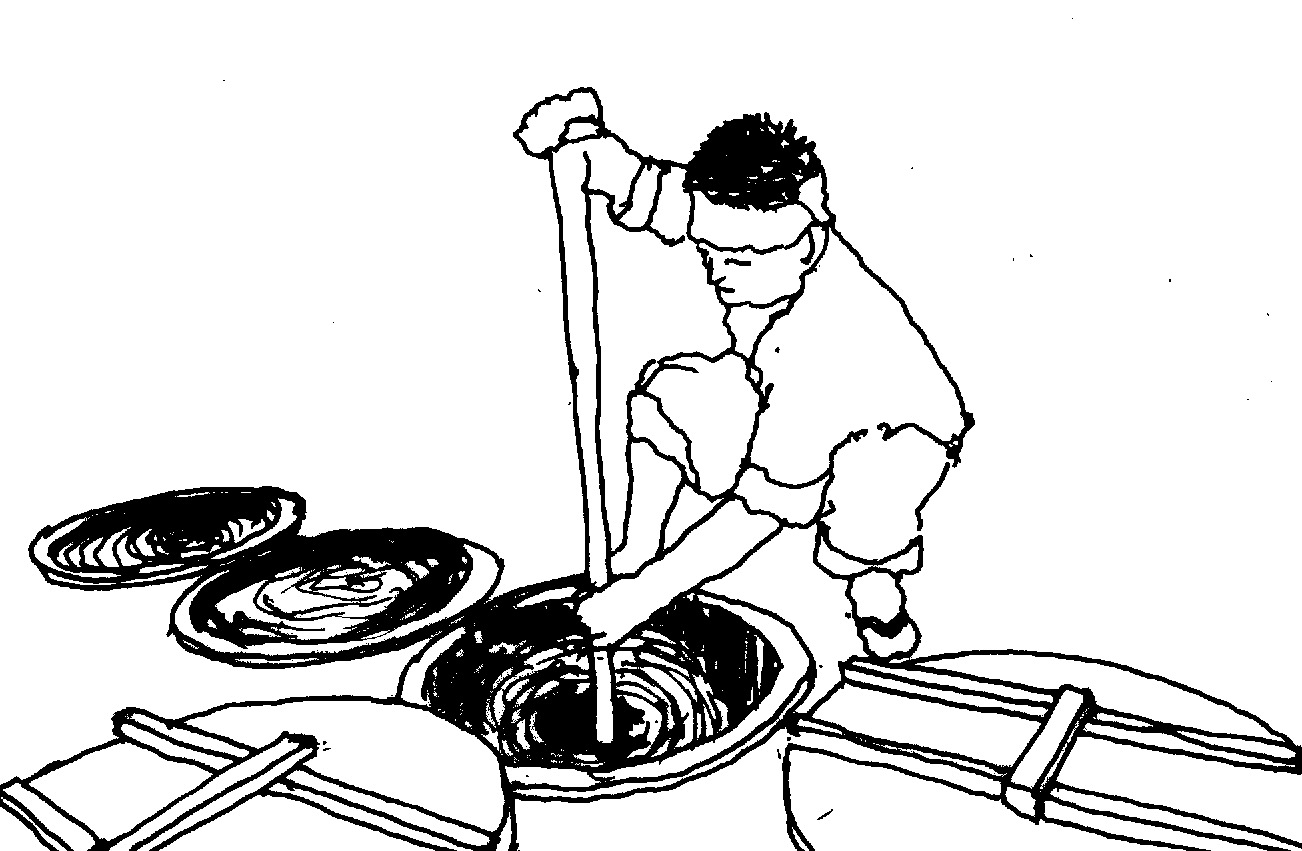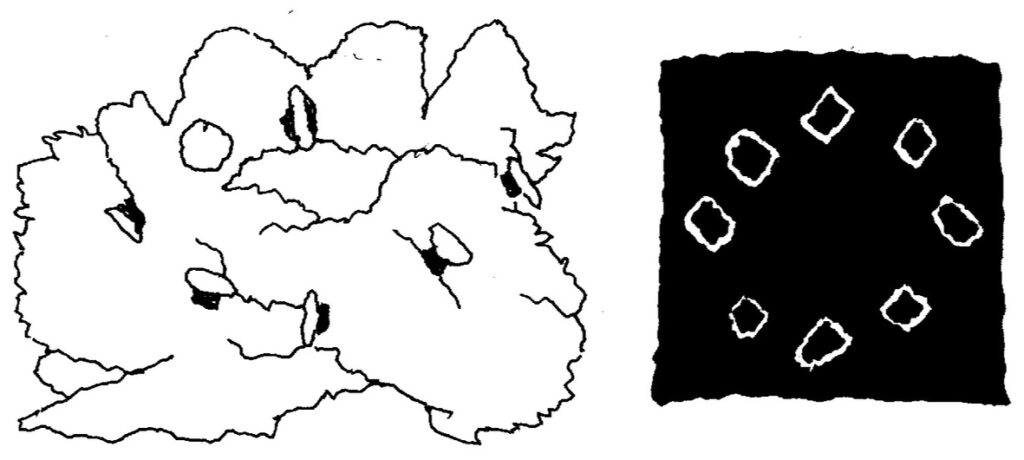藍染
Aizome or Indigo dye, is the craft of dying fabric using indigo, a plant-derived pigment from the Ai plant (Persicaria tinctoria) or knotweed.
As the name implies, the use of indigo for dying textiles originated in India and spread throughout Asia. It is thought that the techniques were transferred to Japan from China during the Asuka period, around 1,500 years ago.

There is no practical solvent for indigo, so a variety of techniques were developed to compost indigo leaves to form “sukumo”, and oxidise or ferment this using lye, made from hardwood ash, to form a dye which bonds to the textile. Natural indigo is a very durable dye which improves with age, with a rare deep blue colour, and also has flame-retardant, insect-repellent, anti-bacterial and disinfectant properties. Samurai and firefighters in particular wore indigo dyed clothing.
The Japanese refined dying techniques to ensure uniform distribution of colour. and to create patterns in the fabric. The dye could be applied directly by brush or stencils or by “resist” dying where dye penetration is partially restricted, known as “Shibori”. This is often translated as “tie-dye” but the word means “press” or “squeeze” and can apply to various forms of dye restriction, including tying, clamping or coating the fabric with wax or glue. In Japan rice wine glue is often used, applied by hand or with a stencil, and multiple dying techniques are often used in combination.
Japan’s indigo dying is among the most sophisticated in the world. This is partly due to the restrictions of privilege and status in the Edo era feudal society. Clothes of fine silk, and particular bright colours, were prohibited for commoners. Cotton, hemp and indigo dye were allowed, and in relatively peaceful times as people became wealthier, they embellished their simple fabric with increasingly complex dyed patterns.
You will see Aizome clothing and accessories on sale throughout Japan. Small items can be surprisingly inexpensive. Aizome kimonos are, not surprisingly, expensive. The best way to learn more about the techniques is to visit one of the traditional textile workshops in Tokyo or Kyoto offering a hands-on experience, where you or your kids can dye your own Aizome textiles.

Tye-dyed, linear pattern

Tye-dyed, radial pattern

Tye-dyed, using stones
